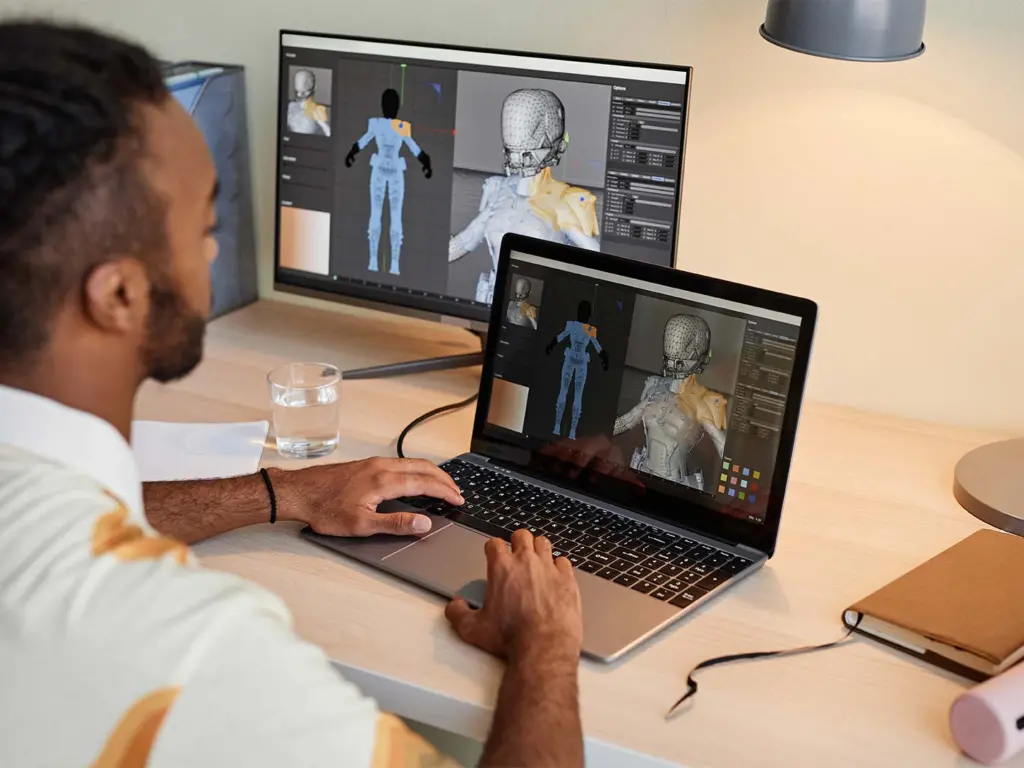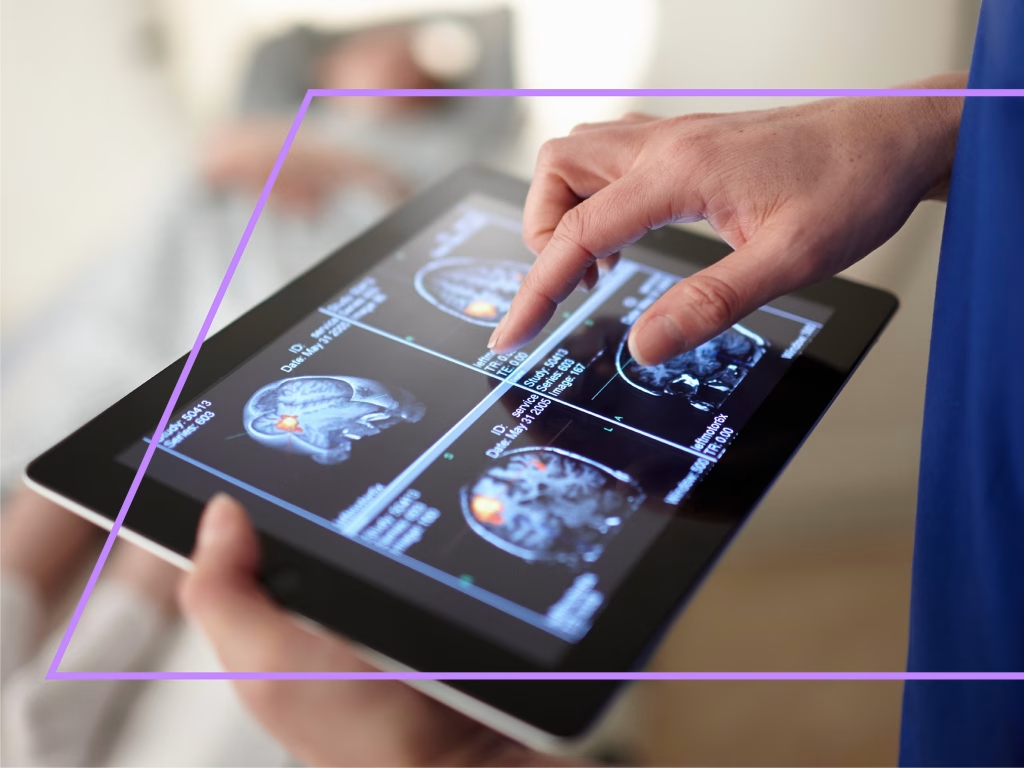Applications of Digital Twins
Emerging digital twin technology has gained increasing attention and importance, moving beyond just manufacturing and into a part of the industry standard for internet of things (IoT), product configuration, artificial intelligence (AI) and data analytics.
What is a Digital Twin?
A digital twin is a virtual representation of a physical object, system or process, mimicking its real-world conditions, properties and behaviors. A digital model is created with 3D technologies full of rich data, often collected from embedded sensors and IoT devices. These models utilize real-time data that uses simulation, machine learning algorithms, and more to gain valuable insights that help to make data-driven decisions that improve efficiency, reduce costs and increase productivity.
The true power of digital twins comes from connecting physical assets with real-time data in a virtual environment — delivering an immersive, interactive experience that is easily accessible. Below are some examples:
Connected Products & IoT
In terms of the IoT and connected products space, digital twins rely on connecting sensors and other IoT devices to real-world objects to collect vast amounts of data on performance and behavior. The data can be used to create a virtual replica to simulate different scenarios, test modifications, and predict potential issues before they happen.
Product Configurators
At their most basic core, 3D product configurators are a digital twin. Product configurators provide a user-friendly interface for specifying complex product attributes and generating a virtual model based on those attributes. By creating a digital twin of a product, the configurator provides real-time feedback on product design, performance, and customer satisfaction while reducing costs and improving operational efficiency.
Artificial Intelligence & Machine Learning
Artificial intelligence technology helps enhance digital twin capabilities. Machine learning and AI algorithms analyze data collected to identify patterns, predict future performance, and recommend optimizations. This offers organizations better opportunities for research and development (R&D), greater efficiencies, and improved decision-making about maintenance, repair, and training.

Episode 56: Digital Twins
Join Vervint resident experts Jesse David and Alex Tweedy to discuss applications of digital twins, potential advantages and how to engage with this new technology.
Industry Use Cases for Digital Twins
Digital twins can be applied across a variety of businesses, industries and applications. Some of the industries that could benefit from this technology include:
Manufacturing
Improve product design and optimize production processes for cost-effective efficiency and better-quality products.
Healthcare
Create more personalized patient care by simulating patient data to test treatment options or build an ideal patient care setting through an augmented reality medical room space planner.
Automotive
Optimize vehicle design and performance, monitor and predict vehicle maintenance requirements for increased safety, efficiency and reliability.
Power Utilities
Monitor and optimize energy systems (power plants, wind turbines, solar panels, etc.) for increased efficiencies and reduced downtime.
Construction
Simulate and test building designs for improved workflows, better construction quality and reduced waste.
Retail
Analyze customer data to test different store layouts and product placement to enhance the customer experience and increase product sales.
Logistics
Test material handling scenarios to improve and optimize logistic processes.
While these are just a few examples, this is by no means a complete list. Any organization with complex physical products or systems can potentially benefit from implementing a digital twin.

IoT Platform Cost Optimization
Discover the opportunities that await when you’ve fully optimized your IoT platform spending.
Digital Twin Technology Platforms
Before starting development work, organizations need to understand the type of platform they need to use to best fit their needs. Here are some examples:
AWS IoT TwinMaker
This tool provided by Amazon Web Services (AWS) allows users to connect, model and compose existing 3D assets as digital representations of IoT devices and contextualize the relevant data produced by them. Integrated with AWS IoT Core, a fully-managed cloud service, enables users to connect their devices to AWS IoT and create digital twin models of their devices. This creates better visualizations of products enabling a better understanding of the performance of physical devices connected to AWS IoT.
Azure Digital Twins
Microsoft Azure created a slightly different tool. This cloud-based platform provided by Microsoft Azure allows users to create, model, and manage digital twins of physical environments and assets. The platform supports integration with various IoT devices, boasting the ability to connect Azure IoT Hub, Logic Apps, and REST APIs to digital twins and the rest of your products while also providing tools for simulation, analysis, and optimization.
Unity
Unity is a popular real-time rendering engine that creates interactive simulations and digital twins. This powerful development program offers a user-friendly interface for creating 3D models, animations, and simulations and supports several devices and platforms.
Since these are just a few examples of the many digital twin platforms, organizations will have to pick a platform to fit the specific requirements and use case, including product type, the required level of simulation and analysis, and the integration with other data sources.

10 Ways to Drive New Business with Unity
Discover how to create new value for complex products with Unity 3D product configurator solutions.
Advantages and Challenges of Digital Twin Technology
As with any digital solution, there are numerous advantages, but there also can be challenges — this is no different for digital twins. Below we outline the main benefits and limitations:
Benefits:
- Improve product design and optimization.
- Enhance maintenance and repair.
- Increase safety and reliability.
- Reduce development time and costs.
- Improve customer experience.
- Enhance training and guidance.
- Rapid prototyping.
- Analyze how users interact with products.
- Efficient stakeholder collaboration tool full of high-quality assets, including visualizations, 3D configurations and more.
Limitations:
- There can be limited accuracy, as the system is only as accurate as the data that is used to build it.
- The initial setup cost and maintenance can, in some cases, be high.
- There may be concerns about privacy and data security.
- There is limited scalability as the complexity of a product or system increases, the amount of data required to create an accurate digital twin also increases, making it more difficult and costly to create and maintain.
As digital twin technology evolves, the benefits and limitations will likely mature. And our team of experts is here to help organizations avoid and overcome the biggest challenges of new technology to drive business value.
Embrace Innovation with Vervint
We meet people and organizations where they’re at to take them where they want to be. Get in touch, and we’ll help move you toward a more innovative future.


